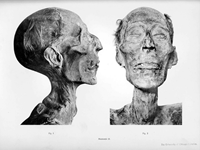A giant black hole destroyed a massive star and hurled its debris into space. The star was about three times the mass of our Sun, making it one of the largest "tidal disruption events" ever discovered.
Astronomers using NASA's Chandra X-ray Observatory, ESA's XMM-Newton and other telescopes have determined that a giant black hole destroyed a massive star and spewed its contents into space, as described in our recent press release. By analysing details of the X-ray data, the team was able to estimate the relative amount of nitrogen compared to carbon following this gravitational assault. These elements provide researchers with valuable clues about what kind of star met its demise.
This artist's illustration depicts the "tidal disruption event" (TDE) called ASASSN-14li, the focus of the recent study. When a star came too close to the supermassive black hole in the system, strong gravity tore the star apart. This artist's impression depicts the aftermath of this destruction. After the star was torn apart, some of its gas (red) continued to swirl around and fall into the black hole. Some of the gas was blown away by the wind (blue).
Scientists used the X-ray spectrum (i.e. a plot of X-ray brightness versus wavelength) from Chandra and XMM to search for elements in this wind. The Chandra spectrum is shown in the inset, where the data are in blue (jagged lines) and the uncertainties for each data point are blue vertical lines. A model of the spectrum is given in red, highlighting the detection of nitrogen from the fluctuation in the spectrum and the non-detection of carbon from the lack of fluctuation.
The amount of nitrogen and the maximum amount of carbon that can escape detection give a minimum value for the ratio of nitrogen to carbon that agrees with the data. This value indicates that the fragmented star in ASASSN-14li is about three times the mass of the Sun. This makes it one of the most massive stars known to have been destroyed in a TDE.
ASASSN-14li was first discovered by ground-based telescopes in November 2014, making it the closest TDE to Earth in nearly a decade. Since then, many telescopes, including Chandra, have observed this system.
In addition to the unusual size of the extinct star and the possibility of detailed forensic examination, ASASSN-14li is also exciting for what it means for future studies. Astronomers have seen medium-sized stars like ASASSN-14li's in the star cluster containing the supermassive black hole at the centre of our galaxy. Therefore, the ability to estimate the stellar masses of tidally disrupted stars potentially offers astronomers a way to determine the presence of star clusters around supermassive black holes in more distant galaxies.
Until this study, there was a strong possibility that the elements observed in X-rays could have come from gas released in previous eruptions from the supermassive black hole. However, the elemental pattern analysed here appears to come from a single star.
Isn't that a great illustration?


 Nielawore
Nielawore










Yorum yazmak için lütfen giriş yapınız